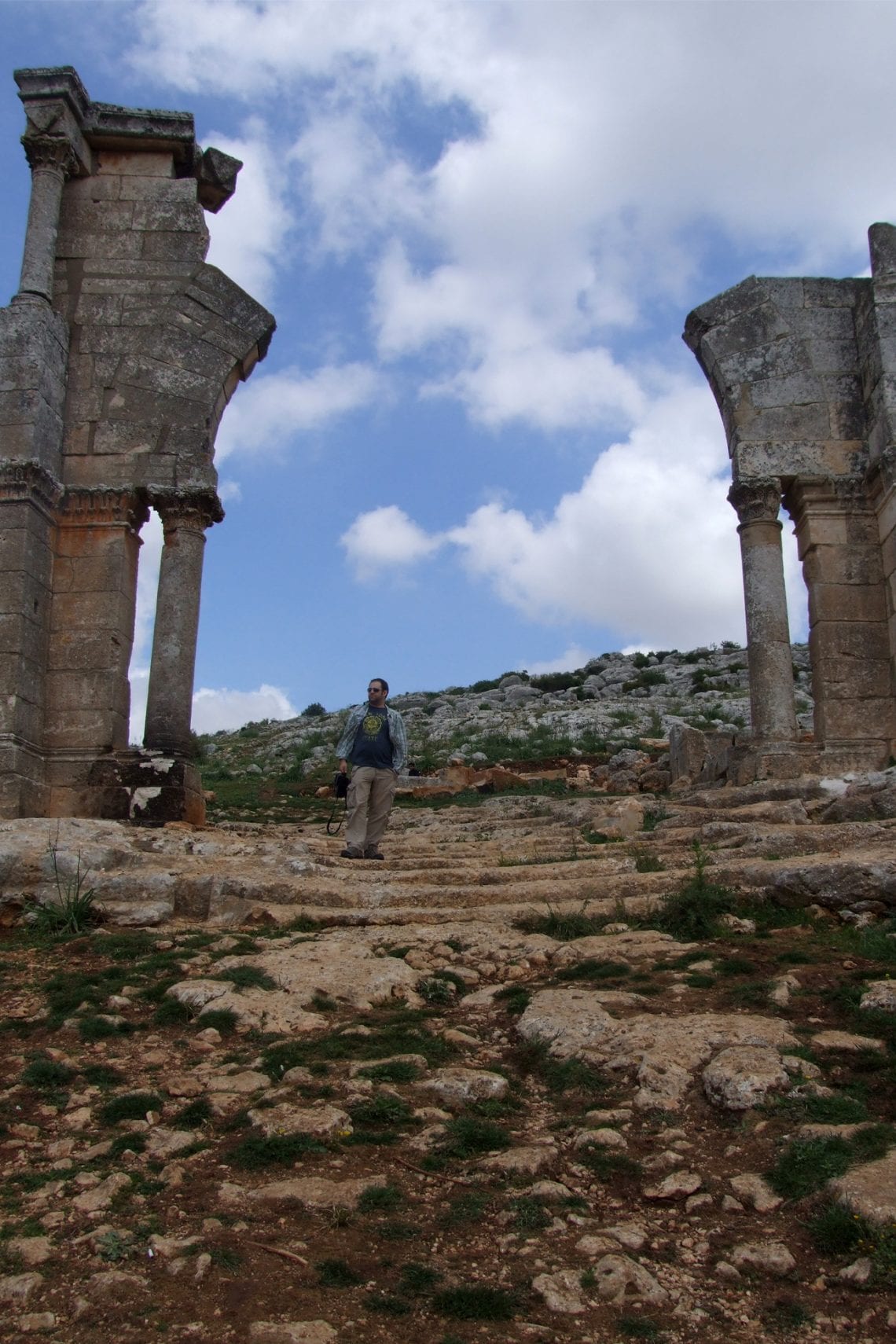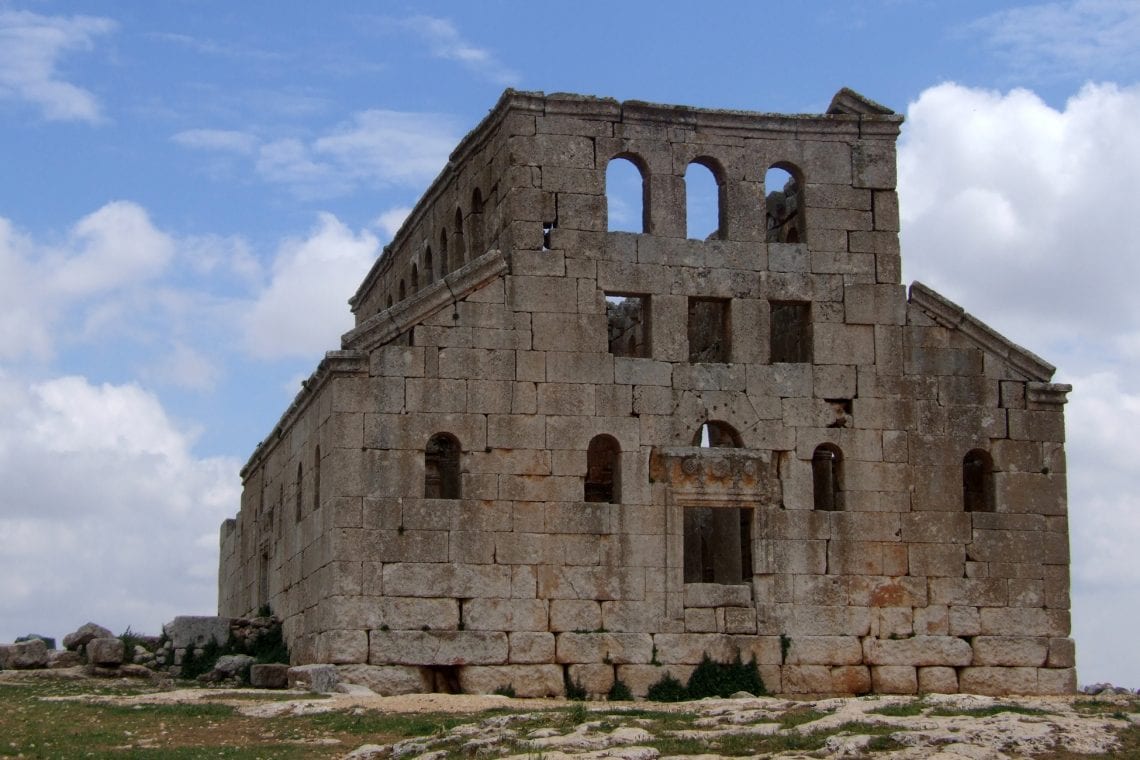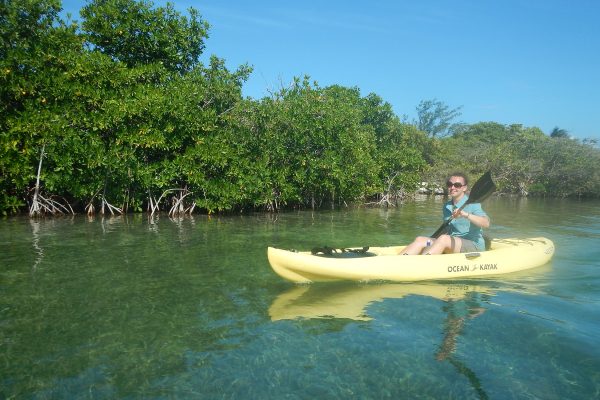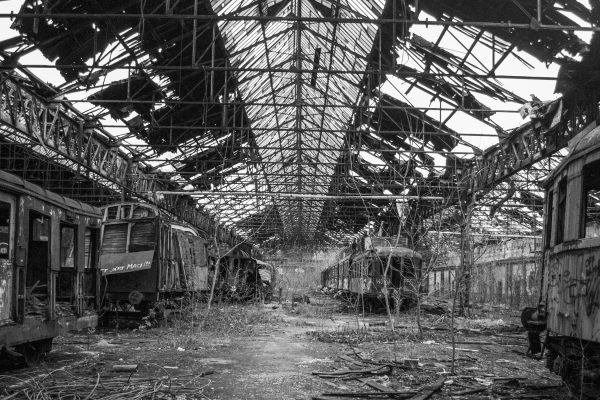Trip duration: 1 day can give your a whistle stop tour | Approx cost: £NA | When: May – Sep
Doinit factor: The chances that you will meet anyone who’s been here are pretty slim!
Scattered along Syria’s North West region are the remains of a past civilization, long dead and forgotten. It’s claimed that 40 ancient Christian Byzantine settlements dating back to between the first and the seventh centuries make up Syria’s mysterious Dead Cities. Surprisingly, yet somehow quite fitting, the modern world has forgotten about these incredible and well-preserved ruins. Even UNESCO, it would seem, has overlooked these sites up until 2011, when they were finally recognised as a world heritage site. With relatively little archaeological research conducted in the area and many questions unanswered, this is the time to allow yourself to wander off the beaten track and immerse yourself in history.
The majority of these cities are concentrated around and between the modern cities of Aleppo and Hama, making either of them the perfect base to explore these settlements. If you’re on a tight deadline or just interested in a whistle-stop tour it is perfectly easy and affordable to sign up on excursion or hire a driver who can take you around the more obvious sights of interest. If you have the time, hiking, cycling and even driving through these sites gives you the freedom and flexibility to explore these dead cities at your own pace. The peaceful landscape provides a great opportunity to simply wander through these ruins, sit down for some lunch, maybe even taking in a nap.
Most of these fabulous ruins have been left to fend for themselves against the elements (and put up a pretty good fight), adding to their majestic charm. With no designated walking paths, no keep-of-the-laws signs, no entrance fees and best of all no “health and safety,” visitors can get right up and personal with the walls and columns which stand proud across the countryside. This also makes it perfectly viable to wild camp in the grounds of the past surrounded by almost 2000 years of history as you gaze up at the night sky as the ancients may have with only the orange glow of your camp fire reflected by the ancient grey stone walls and the crackling of your fuel to keep you company.
Do not go here now!
Do not let this article inspire you to travel to Syria – it is currently in a state or war and you will most likely die before you even get close to these magnificent ruins. Don’t take my word for it – read what the FCO recomend.

Over hundreds of years, some of these ruins have found new inhabitants as the modern civilisation of Syria have reclaimed some of these buildings for themselves and their farm animals, but there’s plenty for everyone to share, tourist and local alike. The reality is that it’s unlikely you’ll stumble into someone’s front room. It’s somewhat strange that much of the population nearby don’t know the significance of what lies across their landscape. Nevertheless, the people you come across will be welcoming and friendly.
While some of these cities may be more renowned than others and guides will highlight certain places to visit, there’s little need set yourself a particular goal or dwell on reaching a certain site. It’s worth buying a local map once in Syria and plan your route once there, and with 40 to choose from, it’s doubtful you’ll see everything. Don’t be to disheartened about only visiting a small fraction, as you’ll be part of a relatively small handful of visitors that make it to this part of Syria, which will truly be an unforgettable experience.The cities often highlighted to visitors include: Church of Saint Simeon, Stylites, Serjilla, Khrabe Shamass and al Bara.



WHERE TO STAY
Organising accommodation in the near by city of Aleppo is probably your best option.
USEFUL LINKS
- Learn more about the dead cities (Ancient Villages of Northern Syria) from UNESCO





